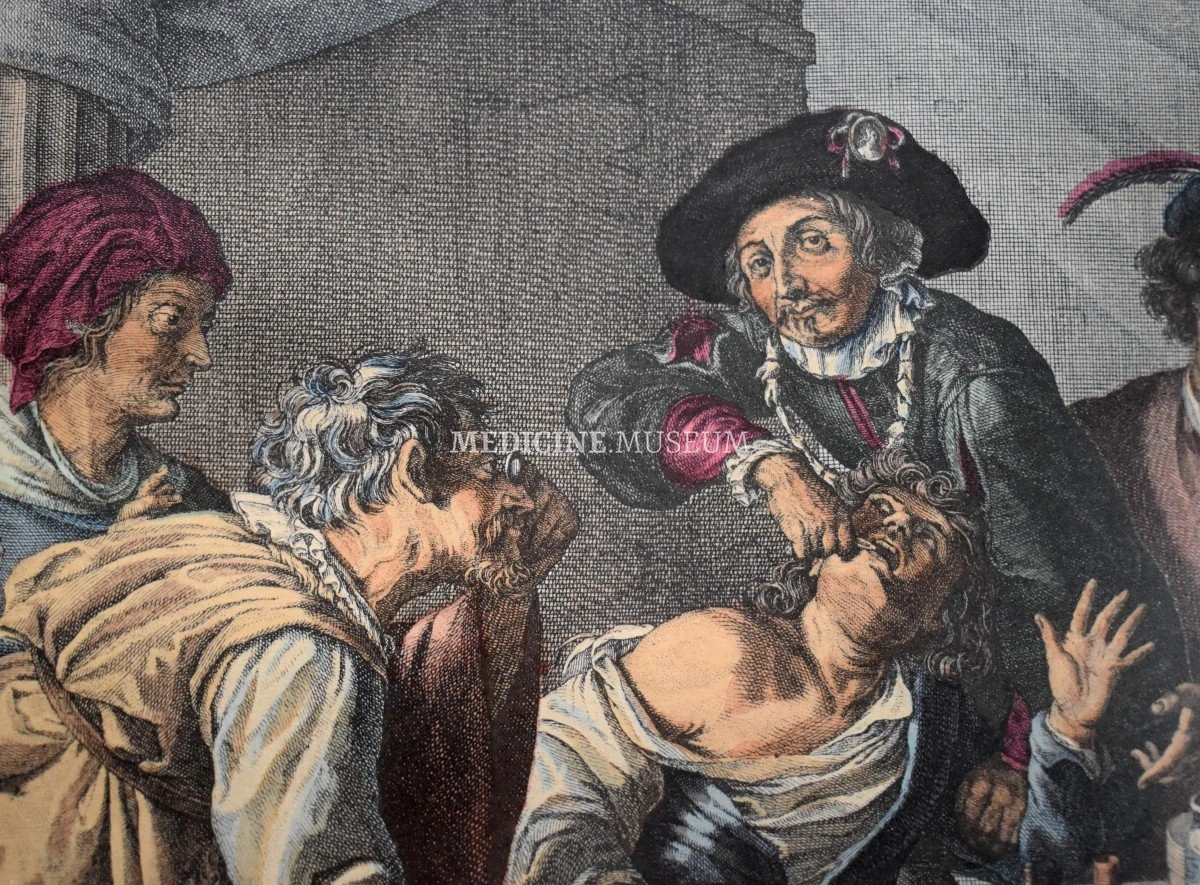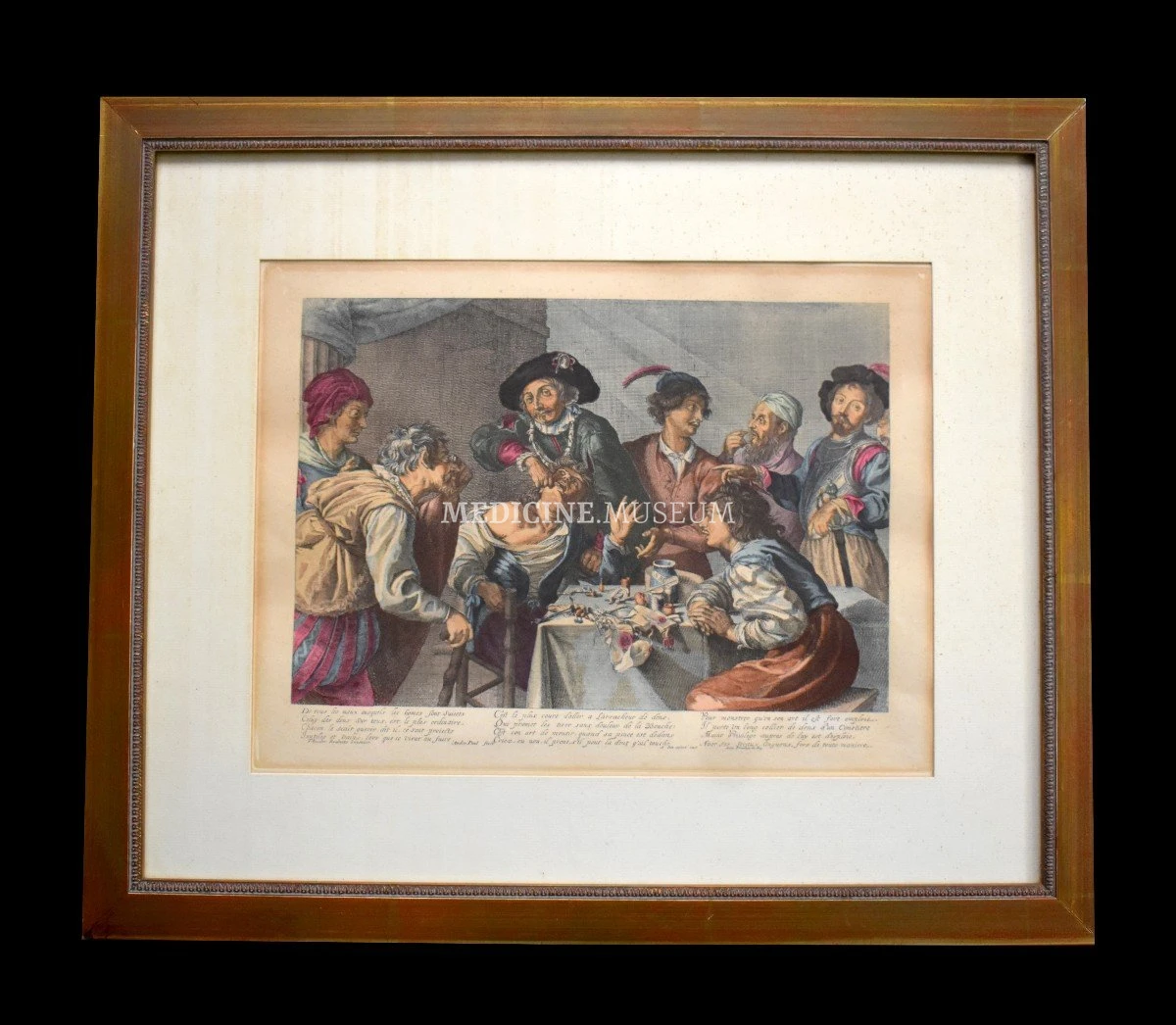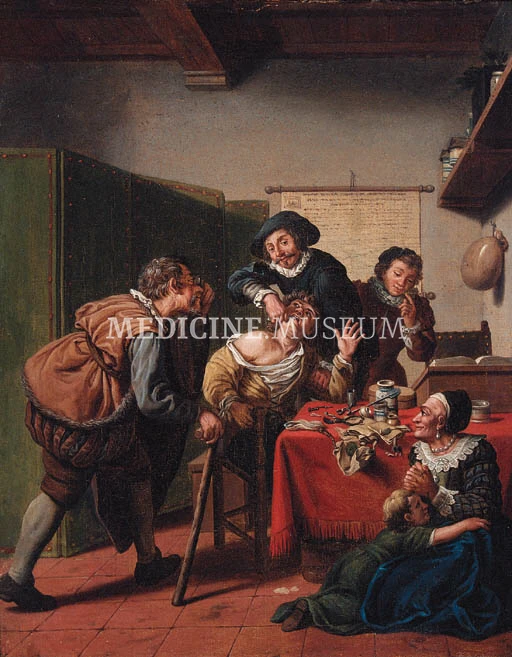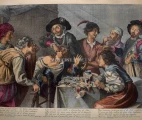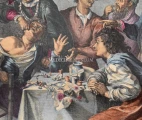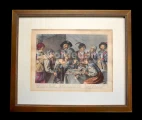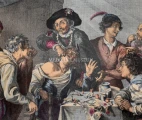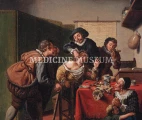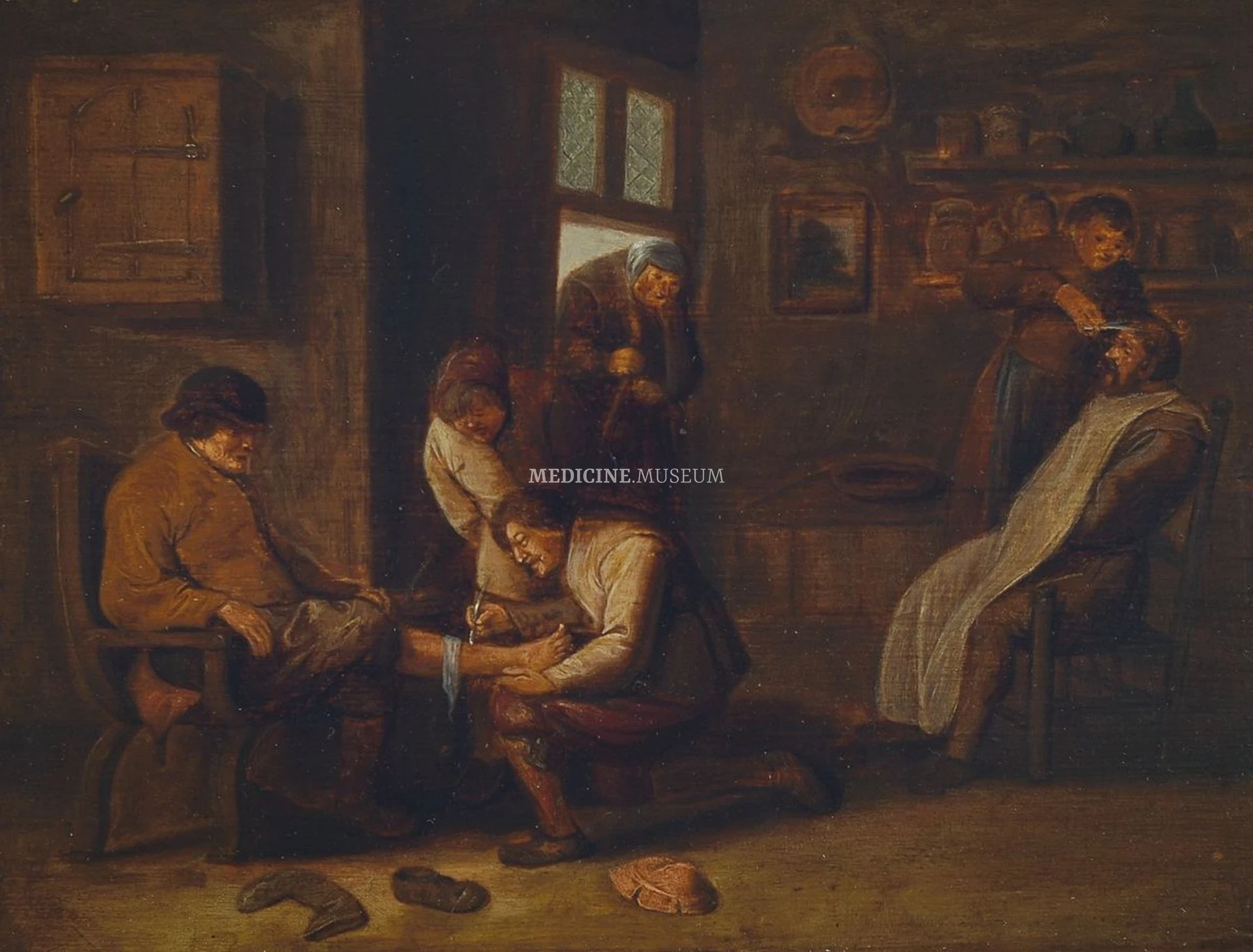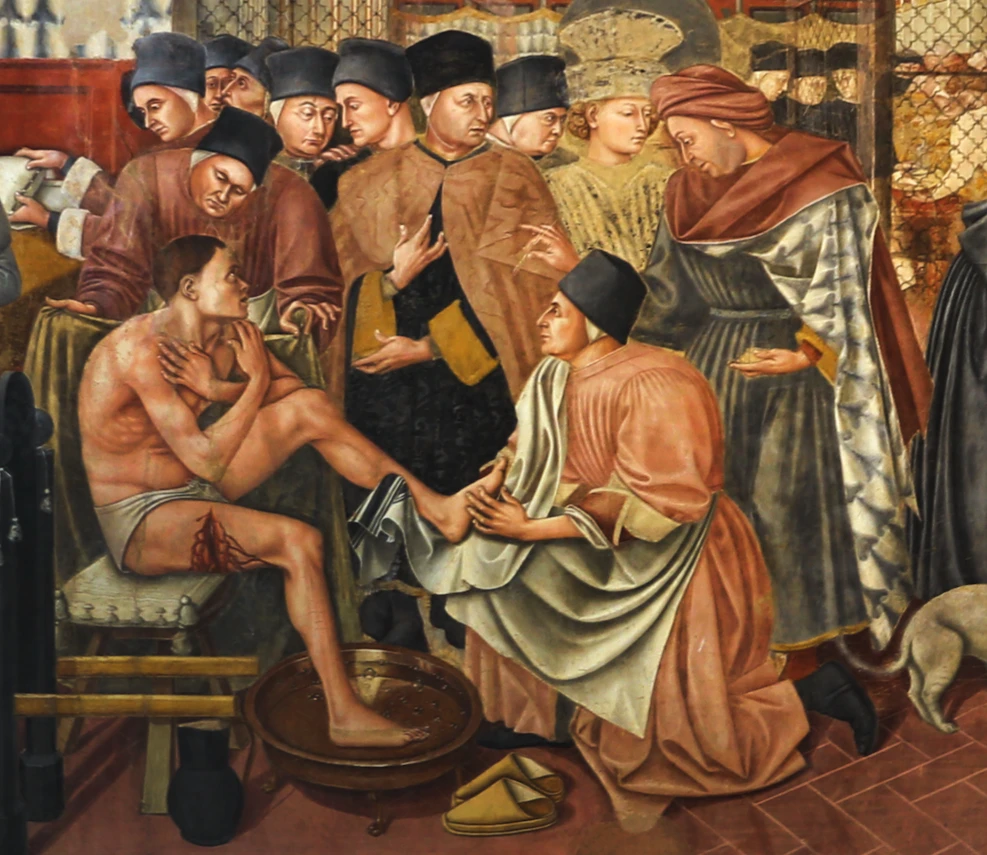The tooth puller
This сolorized French engraving, presumably 18th century, accompanied by three humorous quatrains, depicts the genre scene. The quack tooth-puller looks at the spectator with a sneer, while his hand armed with an instrument is placed in the mouth of the unfortunate patient, who is trying to hold back a cry of pain. Gawkers and potential clients crowded around them, watching the action in horror, amazement and admiration. On the table in disorder scattered intimidating metal dental instruments, dubious certificates and diplomas with seals, documents confirming his qualifications. However, the most convincing proof of his skill is the necklace of teeth he wears to testify to his expertise. It is hard to tell if these are teeth from his past patients or acquisitions from black diggers snatching bodies.
Original source of inspiration
This French engraving is based on the motif of the painting The tooth puller (1620-1625) by Flemish painter and drawer Theodor Rombouts (1597-1637). The original painting is in the main collection of the Museo del Prado, Madrid and is one of the outstanding examples of genre Flemish Caravaggisti. The plot of this picture, apparently, was very close to many people in those years and caused a strong reaction from the audience. It is not surprising that numerous copies and inspired iterations were painted from it, examples of which are our engraving or the work of another Flemish painter, Jan Josef Horemans the Elder, made in the first half of the 18th century (A dentists surgery – see illustration).
Verse
As far as can be judged from the historical handwriting, the following three poetic quatrains are written beneath the engraving:
"De tous les maux auxquels les hommes sont suieets,
Celui des dents, sur tous, est le plus ordinaire.
Chacun le scair guérir, dit-il, ce sont proiéctes
Inutiles et vains.Lors que ce vient au faire.
C'est le plus court d'aller à l'arracheur de dents,
Qui promet de les tirer sans douleur de la bouche;
Cest son art de mentir, quand sa quand sa pièce est dedans,
Criez , ou non, il prent, s'il peut la dent q'uil touche
Pour montrer qu'en son art il est fort employé,
Il porte un long collier de dents d'un cimetière,
Maint privilège autour de lui est déployé.
Avec ses sceaux, onguents, fers de toute manière."
This can be translated in a kind of poetic version like:
Of all the ills to which flesh is heir,
The toothache does most commonly appear.
Each claims a cure, so boldly they assert,
Yet find their efforts naught but dirt.
The quickest path, one finds, is straight
To the dentist, who claims a painless fate.
Yet lies are his trade, as in your mouth he pries,
Whether you scream or silent cries.
To prove his skill, a necklace grim he wears,
Of teeth, as if from graves he tears.
Around him, many a claimed credential shows,
Amid his tools, his potions, his imposing rows.
Condition
The engraving is in good condition, the colors are still bright, many small freckles – light foxing to the outline. It is mounted in a passepartout, framed in a modern gilded frame. Dimensions of the visible part: 26,0 x 34,0 cm (HxW). Dimensions with frame: 42,5 x 50,5 cm (HxW).
Provenance
Acquired on 25.05.2022, at the "Le Houppier", 39 rue Gabriel Thavenot Feytiat, 87220 France
